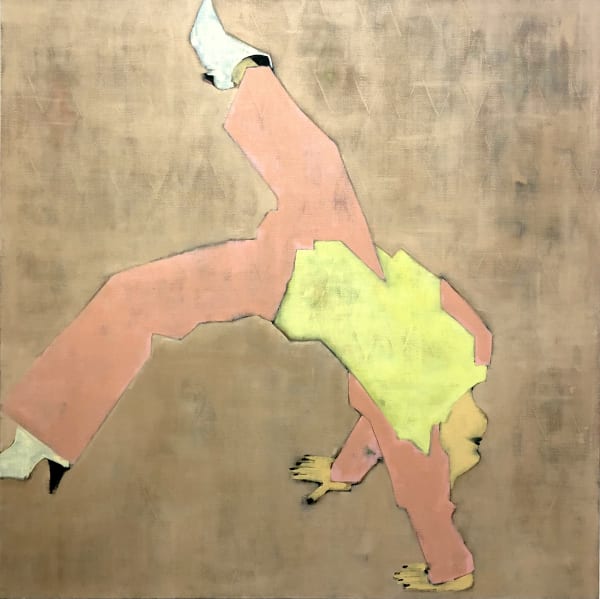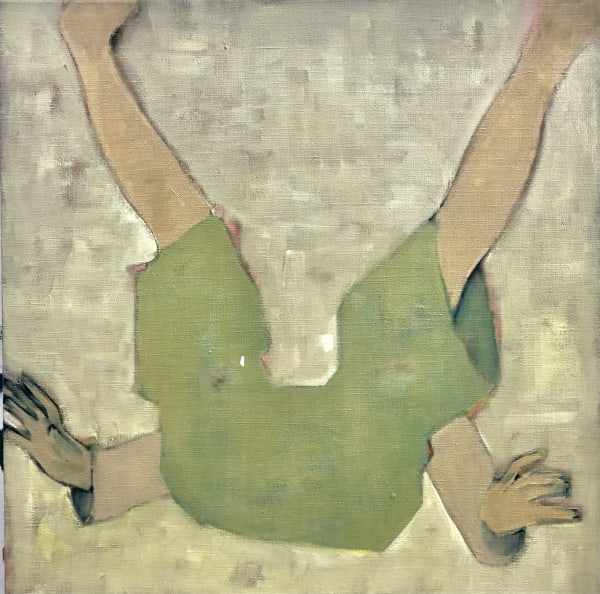-
Taking Space
Sara Berman -

-
-
Solo Exhibitions include upcoming solo show at Kristin Hjellegjerde Gallery, London (2021); Scene Unscene, Gallery 46, London (two person show) (2020); Double Ententre, Anat Ebgi, LA (2018); Between Community and commerce, Site specific installation ZAZ10TS Time Square, NYC (2018); Matter Out Of Place, 93 Baker St. London, Frieze (2018) and Big Cactus Little Cactus, Galerie Huit, Hong Kong (2017).
-
Group Exhibitions include Supastore, NIDA Art Colony, Lithuania (2020); We Could Apply Our Lipstick, C&C Gallery, London (2020); Isolated Observations, Candida Stevens Gallery, Sussex (2020); Cure3 exhibition, Bonhams, London (2020); Exeter Contemporary Open, Exeter Phoenix, Exeter (2019); Hauser and Wirth Hospital Rooms Fundraising Auction, London (2019); Think In Pictures with Amelchenko Curated by John Newsom Orchard Street, New York (2019); Dark Wood, Transition Gallery, London (2017); Royal Academy Summer Exhibition, London (2017); Young Gods, Charlie Smith Gallery (2017) and Topophobophilia, Gallery 46, London (2016).
-
-

-
Enquire
-
 Sara Berman, Freefall, 2021
Sara Berman, Freefall, 2021 -
 Sara Berman, Somersault, 2021
Sara Berman, Somersault, 2021 -
 Sara Berman, Crouch, 2021
Sara Berman, Crouch, 2021 -
 Sara Berman, Laid Back, 2021
Sara Berman, Laid Back, 2021
-
 Sara Berman, Pounce, 2021
Sara Berman, Pounce, 2021 -
 Sara Berman, Oops, 2021
Sara Berman, Oops, 2021 -
 Sara Berman, Beastie Boys, 2021
Sara Berman, Beastie Boys, 2021 -
 Sara Berman, Pense, 2021
Sara Berman, Pense, 2021
-
-
-
Each painting begins with the motif of the harlequin. Traditionally, the harlequin is portrayed as male — a sly, but lovable joker, dressed in a bright diamond-patterned costume. However, the same character as a woman becomes a trickster whore. While this articulates a familiar double standard, Berman’s interest lies in how our perspective of self and others might be impacted by external appearances. She begins by stretching the canvas very tightly over the frame before painting the distinctive pattern of the harlequin's costume as a base layer onto the canvas, which becomes “a map” or “the soul” of the composition. She then works over the pattern with further layers of paint, scraping, wiping and pushing to create a kind of bruised surface through which the outlines of the diamond shapes are illuminated by light. “The colours I choose are generally soft and gentle” she says, “but the making process is very physical, almost violent. I feel, increasingly, as I get older that being a woman is a violent thing.”
The shapes of the women are generally based on photographs of friends or self portraits for which Berman uses furniture and more recently, acrobatic equipment to help her achieve contortion and elevation. Regardless of the original models, there is a strong likeness between the figures, as if they are multiple iterations of the same person. “At a certain point I realised that I didn’t want to get bound up in the who or the what,” explains Berman. “Self portraits are the easiest way for me to not deal with the specifics of identity. They’re simply women in space. By painting them as myself, it’s a way of avoiding objectification.” Instead, personality and emotion are conveyed through the figures’ physical gestures in space, and the textures and shapes of their clothing as well as the application of paint itself. While the compositions might appear precise and simple from a distance, closer inspection reveals markings that imply the weaving of threads; subtle imperfections where the colours bleed out of the lines or splashes of paint are flicked across the canvas; and surprising pops of neon colour that suggest a pooling of light or passing shadows.
-
“These paintings are about the sensation of being in the body,” says Berman. “I use clothing intentionally as a space which contains the body, a place for it to exist within a holding space.” The clothing is usually androgynous in style, based on pieces by known fashion designers and vintage finds, but through the process of painting, the artist flattens the garments, removing the folds and seams of the fabric so that it becomes a rigid shape that simultaneously contains and abstracts the body. This is perhaps most obvious in the painting entitled Freefall in which the figure is caught moving through the air. While we might recognise and relate to the physical sensation of the movement, the body itself is obscured by the colour and structure of the clothing, and the lack of surrounding context creates an almost surreal effect. In a similar way, the women’s hands are often painted out of proportion so that they appear huge and claw-like, gripped in tension, or delicate and oddly small. The fingernails are always painted black, creating a striking contrast against the pale, pastel shades and directing our gaze towards a particular gesture. For example, in the painting Moves which depicts one woman leaning back against another, the hands articulate a sense of dynamism - the sensation of pushing and pulling -, while the figures themselves are relatively static. The woman at the front has her hands reaching back in a gesture of intimacy, while the other woman’s arm stretches across the canvas, as if trying to establish some kind of distance or separation.
The works in the show range in scale. The smaller works contain the figure in an almost claustrophobic frame, which is both uncomfortably tight and curiously intimate, while the large-scale paintings have a powerful impact on the process of making and the viewer’s bodily relation to the image. To make these larger works, Berman was required to use ladders and large brushes, rendering limbs and faces much bigger than her own. “I want them to feel as imposing as they felt to me,” she says. “These paintings are very much about claiming presence as a person, as a woman. There’s a slight arrogance to them which I like because taking space is an act of necessary selfishness.” At the same time, the gentle colour palette and playful approach to composition conveys a palpable sense of humour and joy. As Berman’s women boldly tumble across the canvas, asserting their strength and physicality, we are invited to experience a heightened awareness of how we move through and occupy the world we live in.
-
-
Taking Space
Past viewing_room


















